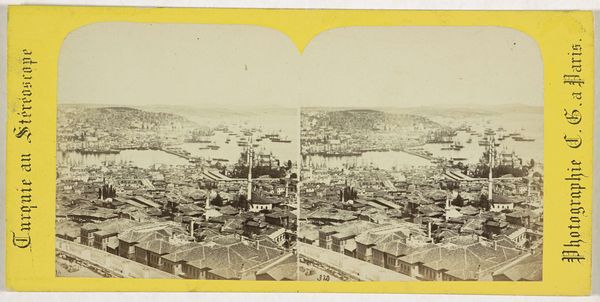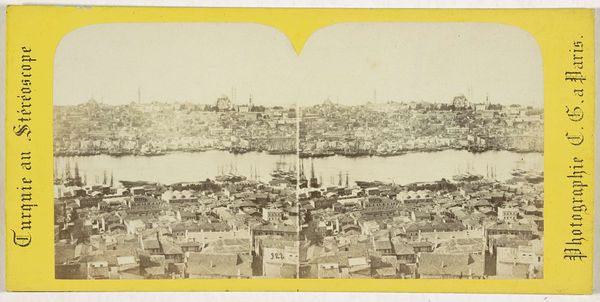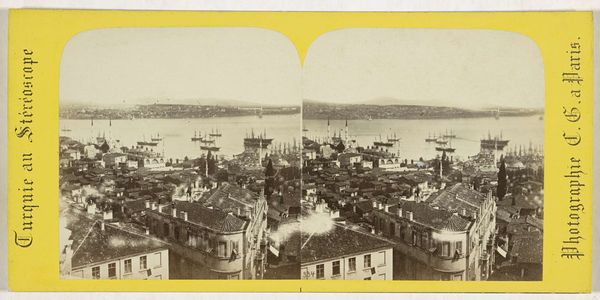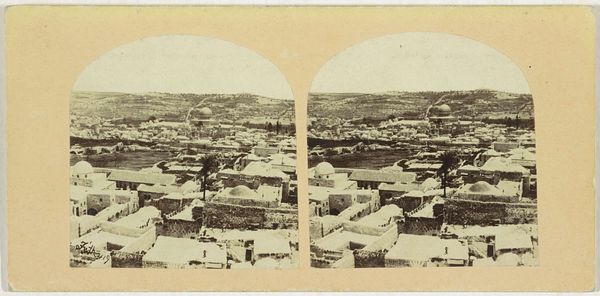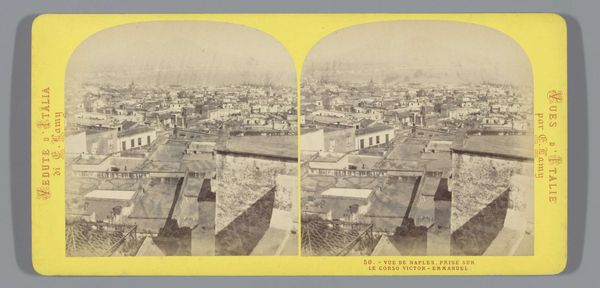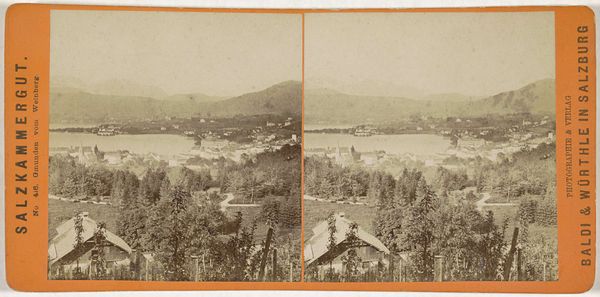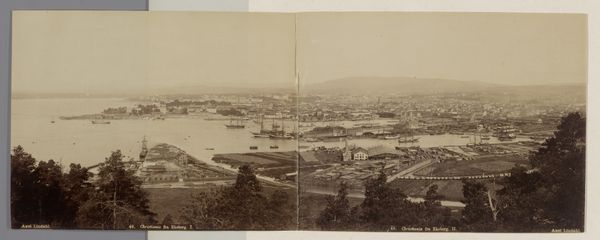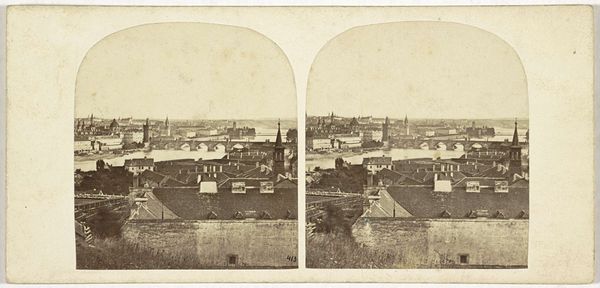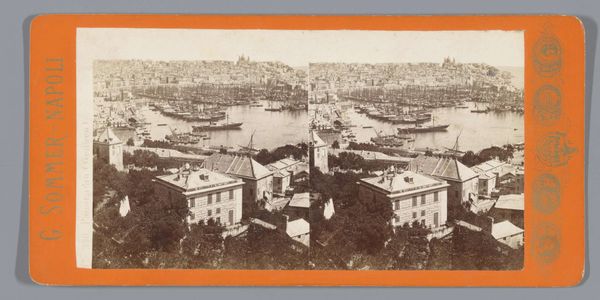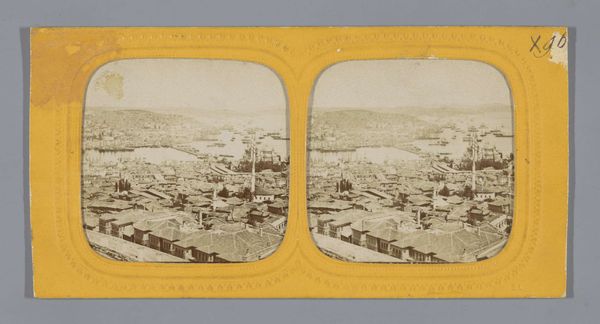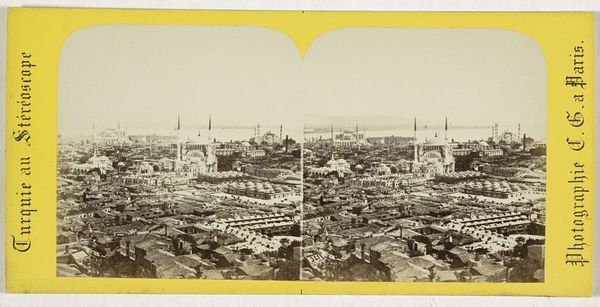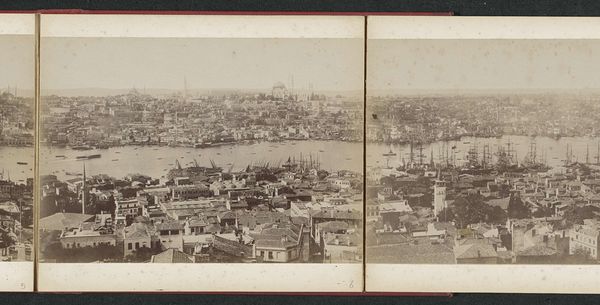
photography, albumen-print
#
landscape
#
photography
#
orientalism
#
cityscape
#
albumen-print
Dimensions: height 84 mm, width 174 mm
Copyright: Rijks Museum: Open Domain
Curator: This albumen print from between 1861 and 1870 gives us a stereoscopic “View of Istanbul” by Charles Gaudin. Editor: It's…dense. My first impression is of layers upon layers; buildings crammed together spilling down to the water. There’s a strange anonymity to it, even from this high vantage point. Curator: Indeed, the city's public image was quite strategic, as photographs like these served a very distinct political function, aligning with the aesthetics of Orientalism that flourished during this era. The presentation is carefully controlled. Editor: Control is definitely the word that comes to mind, now that you mention it. But control on whose terms? These manufactured, picturesque representations really do flatten the rich realities, the social complexities… Curator: Certainly. Stereoscopic images themselves, intended for a largely Western, European market, provided a vicarious, commodified experience. One where, through this technological mediation, a sense of power and distance could be maintained. Editor: It really raises questions about the photographer's role here – Gaudin in this case – acting as both observer and a sort of filter. What perspectives get prioritized? Which voices remain silent in this carefully constructed 'view'? Curator: It invites reflection on our role too, as contemporary viewers consuming historical images. It urges critical viewing that confronts those historical power structures that often go unchecked. Editor: Exactly, so seeing not just a skyline or even a beautiful photograph, but an artefact that speaks to wider social, cultural inequalities...That kind of active questioning helps disrupt the original intent and helps recover some truth. Curator: An essential point; these are always documents of power dynamics and the specific forces and historical context must inform our interaction. Editor: Thank you. That’s given me much to reconsider about perspective and visibility. Curator: Indeed, seeing images like these can serve as starting points for discussions regarding historical context and who has agency to be represented.
Comments
No comments
Be the first to comment and join the conversation on the ultimate creative platform.
